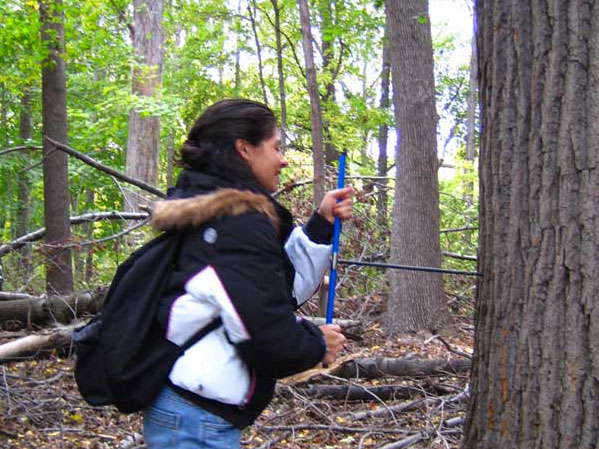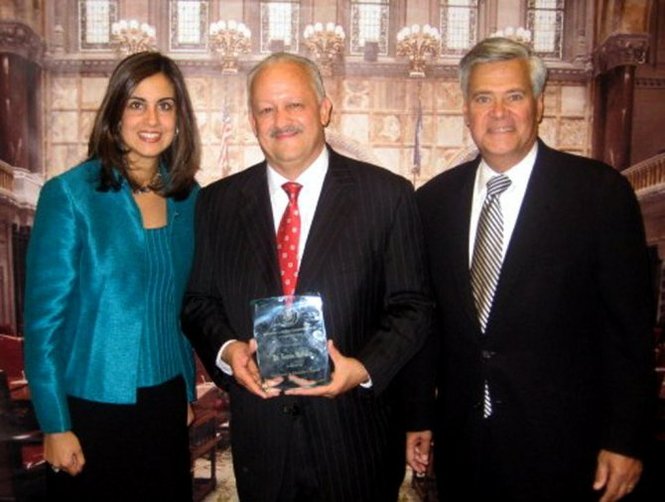As concern over the effects of global warming continues to increase, two researchers from the College of Staten Island/CUNY (CSI) have conducted a study of trees in Palisades Park in an effort to unlock evidence of past droughts, and predict future dry spells.
Athanasios Koutavas, Assistant Professor of Geology at CSI, and Jessica Mulligan, a CSI junior with the Macaulay Honors College, have discovered that the rings of old-growth oak trees in the famous park contain a chronicle of moist and dry periods over the past 200 years. By studying the past trends of droughts, some of which lasted for a decade, Koutavas and Mulligan hope to predict future trends, particularly in light of warming global temperatures and the increasing demand for water by our rapidly growing population. Koutavas reports that past drought history indicates that “the vulnerability of New York to drought remains a serious concern, with the next persistent dry spell possibly around the corner.”
Mulligan, who took the first tree samples, began work on this project in her sophomore year, and analyzed the material in the CSI tree-ring laboratory using microscopy and computer-assisted measurement techniques.
Commenting on Mulligan’s invaluable contribution to the project, Koutavas says, “Whether sampling oaks in the field with an increment borer, measuring ring widths in the lab at the Velmex workstation, or analyzing the data on her personal computer provided by the Honors College, Jessica has worked patiently, methodically and tirelessly. This experience has guided her through all the steps of the scientific process, from formulating hypotheses, collecting samples in the field, making laboratory measurements, analyzing data, synthesizing results, and integrating them with previous studies, all the way to interpreting, discussing and presenting her work.”
Mulligan, who recently presented her findings at the annual National Collegiate Honors Council conference in Denver, notes, “I am so lucky to be able to have this experience of going out into the field, coring trees, and analyzing the data with Professor Koutavas. The research has opened my eyes as a global citizen and has made me more aware of my role in the environment.”
Mulligan’s co-presenters in Denver were Macaulay Honors College students Ray Pfaff and Samantha Balestriere.
# # #
Editor’s Note: for more information visit: athankoutavas.googlepages.com
Why the Palisades? by Tom Koutavas
The geomorphology and soil type make the trees in this park very sensitive to moisture stress. The park is over ten miles long, along the Hudson River so by sampling at several sites we avoid “microclimate” influences that may be atypical of large scale climate. In general the climate changes we see there should be characteristic of the metropolitan New York Area. More importantly: the park has old trees! The oldest one we’ve found dates to 1771. Old growth trees are rare in the northeast as they were massively logged by early settlers.
The trees have many stories to tell and drought is one of them. We see clearly the evidence of known droughts in 1999, the 1980s and 1960s, and we see earlier ones in 1945, 1910s, 1896, and beyond. The recurrence of drought is unmistakable and of most concern are those droughts that persist for more than one year such as in the ’60s and ’80s.
This is one of several tree-ring research projects underway. The tree ring lab at CSI is the only one of its kind in CUNY, and is less than two years young, but we are already working in diverse areas from Tennessee to California, to Greece, and soon the Canadian Arctic.
Within three to five years we hope to have climate change projects underway from every continent.
















